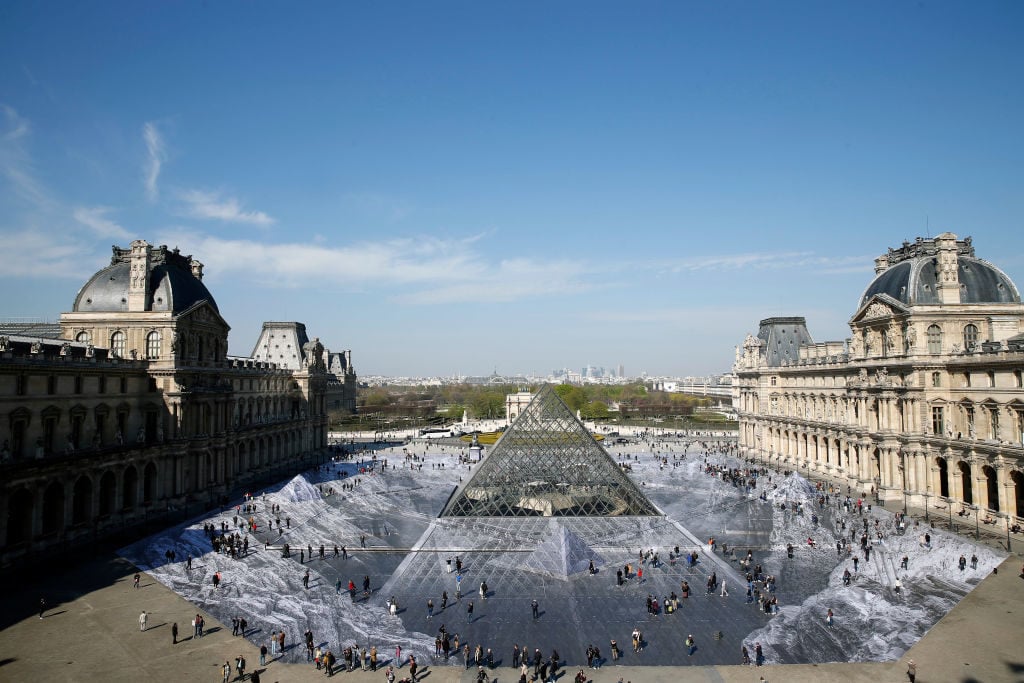On View
Visitors and Weather Conditions Damage JR’s Massive Installation at the Louvre Hours After Being Completed
The street artist's trompe l'oeil installation was epic and, it turns out, very ephemeral.

The street artist's trompe l'oeil installation was epic and, it turns out, very ephemeral.

Kate Brown

A highly-anticipated installation by the street artist JR was damaged after visitors to the Louvre began peeling up pieces of the sprawling ground collage to take home as souvenirs. Sunny weather dried out the glue beneath stickers laid down to create an optical illusion at the Louvre’s famous pyramid, making it easier for visitors to either intentionally or unintentionally remove pieces of the massive installation.
The famed French street artist created the short-lived collage at the Napoleon Court to commemorate the 30th anniversary of the erection of the Louvre Pyramid. It created an optical illusion that “revealed” the foundations of the courtyard to be a plunging rock quarry. But just hours after the installation in the museum’s main courtyard was complete, pieces of the black and white stickers on the ground had already started to come off.
Some 400 volunteers spent days gluing around 2,000 strips of the image down piece by piece between Tuesday, March 26, and Friday. The 17,000 square meter (183,000 square feet) image, called The Secret of the Great Pyramid, is an “anamorphosis” design: from one specific aerial perspective, the third floor of the Louvre, the viewer’s perspective is perfectly aligned so that the pyramid appears to be double its height, fantastically emerging from the dark canyon.
But, at least on the ground, the reality a few hours later was slightly less awe-inspiring. Visitors were tearing up pieces of the installation to take home as souvenirs and the sun had dried the glue that pasted it to the ground causing pieces to peel off on their own. The artist took to Twitter to explain what happened and why we shouldn’t worry too much about it. “The images, like life, are ephemeral,” he tweeted. “Once pasted, the art piece lives on its own. The sun dries the light glue and with every step, people tear pieces of the fragile paper. The process is all about participation of volunteers, visitors, and souvenir hunters.”
A spokesperson from the Louvre echoed the point. “It is normal that it deteriorates, we just did not know how fast it would happen,” they told the Huffington Post. They added that everything is “fine” as the work was due to be removed by Sunday anyway.
Despite its short lifespan, the work has been immortalized in striking photographs, and the entire days-long construction process was recorded.
“This project is also about presence and absence, about reality and memories, about impermanence,” JR wrote on Twitter a few hours later. Indeed, the project had an emotional component for the artist; he dedicated it to the filmmaker Agnes Varda, a collaborator and friend of his who died last week; Together with Varda, he co-directed the Oscar-nominated documentary Faces and Places.